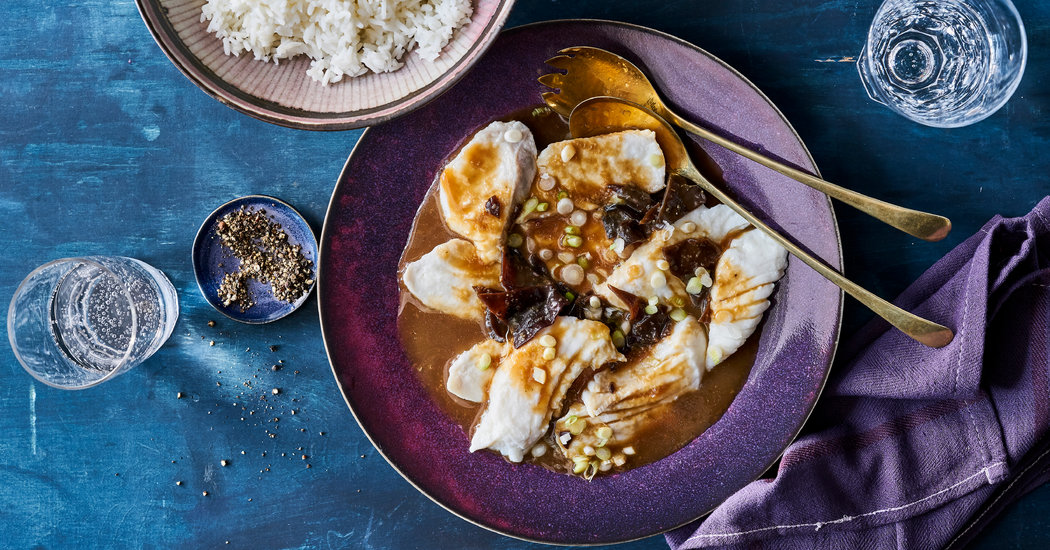
It’s a joy to have a favorite dish at a favorite restaurant. I have them all over town. There’s a change in the weather, something clicks in my brain and I want to go, right now, to Chez Napoléon on 50th Street to eat leeks vinaigrette, or to carve into a mutton chop at Keens. I might find myself thinking, at 7 a.m. on a Thursday, how much I’d like to eat a steak frites at Houseman off Spring Street, or to ascend the stairs of Yemen Café in Brooklyn to eat foul, the Levantine chili made with fava beans instead of beef. These hungers come and go, like spirits. Sometimes they stick hard like a habit, for months.
Lately all I’ve wanted to eat is the velveted fish at China Xiang on 42nd Street, just off Ninth Avenue. Nancy Xiao opened the place a few years ago, a narrow storefront operation catering mostly to the Chinese students who crowd the high-rise apartment buildings nearby, and to those with business at the Chinese consulate, which sits west on 42nd Street, near the Hudson River. “I have customers who eat here twice a day,” she told me not long ago, when we sat down to talk before the lunch rush. I have occasionally been one of them.
Xiao is from Hunan Province, in south-central China. Her restaurant pays homage to the cuisine of the region, dry and spicy, but not exclusively so. Zhen Lei, the restaurant’s chef and Xiao’s partner, serves immense hot pots and marvelous smoked meats, a few excellent soups and platters of rice noodles, lots of what Xiao calls on her menu “farm house” dishes: pork belly prepared in countless ways, potatoes both white and sweet. “Country food,” Xiao called it, “home-style.”
The fish dish at China Xiang doesn’t fall into this category. It’s more refined, almost like banquet food: delicate, supersoft flounder set alongside pillows of tofu, in a glistening wine-dark sauce. On the restaurant’s menu it’s listed as “fish fillets with soft tofu.” Ed Schoenfeld, the New York restaurateur and chef who started his career at the front of the house at Uncle Tai’s Hunan Yuan in the 1970s, recognized it instantly when we shared it over lunch. He said it was a version of a dish he knew as “fish slices in wine-rice sauce,” made with the liquid that surrounds fermented glutinous rice. There is a similar one in the classic 1969 cookbook “Chinese Gastronomy,” written by Tsuifeng Lin and her daughter Hsiang Ju Lin, called “Fish Fillets in Tart Sauce.”
Velveting the fish and then covering it with sauce is technical work. The fish is marinated in cornstarch and egg white to form a kind of skin, which is carefully passed through hot oil to set. Finally, it is tossed carefully in sauce, so as not to break the fillets. The Lins, in “Chinese Gastronomy,” call this “two-passes” cooking.
Lei outlined a recipe for the sauce: no wine rice (which is like a fermented congee, as much a texture as a taste) but a little Chinese rice wine in its place, as well as oyster sauce, soy sauces dark and light, vinegar. It took me days to balance the flavors, to match them to memory and to fact. Wood-ear mushrooms are the traditional topping, but I found shiitakes to be a worthy substitute when I couldn’t find wood-ears. And I knew I could velvet the fish in hot water instead of oil if I was careful while adding it. This was a practical home-cook solution to a home-cook fact: No one wants two cups of fish-stained oil left over after a weeknight dinner. I tried it both ways to see if there was an appreciable difference in texture or flavor. There was not.
As for the “two passes” for the fish, Jonathan Wu, formerly of Nom Wah Tu in Chinatown and now a private chef on the Upper East Side, gave me invaluable advice. “We think of stir-frying as this high-heat, fast-hands situation with a flaming wok,” he told me. “But here you want to slow way down, use surgical hands on the delicate fish, try to get that lovely texture.” Gentle is the name of the game.
I omitted tofu from the recipe because I wanted more fish. You could easily omit the fish if you felt the opposite. (Or, like the restaurant, you could go half and half.) Flounder works beautifully, but so do tilapia, halibut, cod. “It’s the kind of dish that makes people want to eat fish,” Schoenfeld said, finishing his. “It’s the kind of dish that makes people fall in love with Chinese food.” You might even make a habit of it.
Recipe: Velvet Fish With Mushrooms
Sign up for our newsletter to get the best of The New York Times Magazine delivered to your inbox every week.




